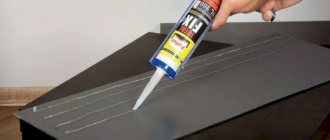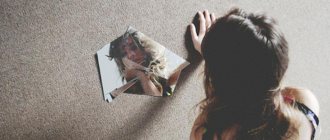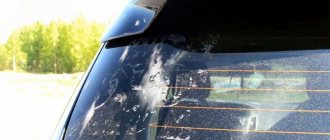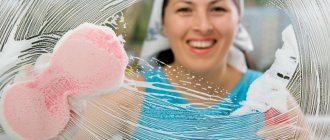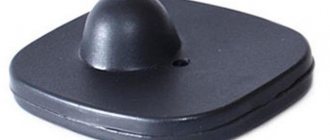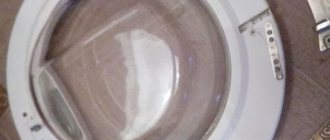Carrying out renovations in a home that will be a refuge for you and your family for many years to come is a natural and useful activity, especially if done in a timely manner, but it also takes a lot of effort.
Sometimes even such a simple task as unsticking a mirror from a cabinet can become overwhelming if you don’t know the special secrets that professional builders have developed over many years.
Mirrors are usually glued tightly to cabinets, or screwed using fastening devices. But their shape can get boring, and over time they become damaged. Let's learn how to remove them by learning several techniques for separating mirrors from the surface of the cabinet.
How to remove a mirror from a closet door?
Separation of mirrors held on its surface by fasteners from the cabinet
So, first of all, we will discuss how to remove mirrors from the cabinet that are mounted on its surface using fastening systems.
When separating the mirror from the surface of the cabinet, it would be wise to remove the door from its hinges and lay it horizontally so that the glass does not fall to the floor haphazardly
Table 1. Mounting systems for mirrors
| Fasteners | Description |
| Suckers | Silicone suction cup holders are not often used as a fastening device for placing a mirror on a vertical cabinet surface, however, they are still found. In this case, you are more likely to worry about the suction cups not accidentally coming off if the door of a given piece of furniture slams too loudly, since silicone suction cups are too often poorly made. Consequently, they are unable to hold the mirror in the place you have determined, and this accessory often falls. How to remove: You can easily remove a mirror fixed to the surface of the cabinet door using suction cups by simply gently pulling its body. If the suction cup does not come off easily, carefully pick up its edge with a ruler or fingernail. |
| Screws | Quite often, mirrors are attached to cabinet doors, walls and other vertical surfaces using screws. Screws can hold this accessory to the surface of the cabinet, while being passed through: mirror frame; "body" of the mirror surface. In both cases, the screws do not stick out on the surface; they are hidden under special rivets made in the shape of a mushroom: with a wide hat; with a leg that fits inside the groove of the mirror screw. How to remove: All you need to do to remove a mirror mounted on screws is to pick up the decorative knob of the fastener, remove it, and then, using the most ordinary screwdriver that fits the size, unscrew one by one all the screws that hold the mirror. Please note: to remove the mirror without breaking it, you need the help of a second person to hold the accessory, preventing it from falling. |
| Staples | Bracket holders are another way to secure a mirror to a cabinet door. Each holder is separately screwed into the wall using flat-head screws. Before screwing it in, a bracket is put on each screw - a holder, which will then hold the mirror. The tighter the bracket is tightened, the stronger the mirror “sits” in it. Several such staples are used along the entire perimeter of the mirror to clearly fix our mirror accessory. How to remove: And depending on the quality and thickness of the staples, as well as your desire to use them in the future, the following methods can be used to remove the mirror from the surface of the cabinet: bending the staples with pliers (in this case it will be impossible to reuse them); unscrewing screws. Please note: in this case, you will also have to enlist outside help, since when the brackets are sequentially unscrewed, the mirror will no longer hold anything, and someone must do it with their hands. |
The above methods of attaching a mirror involve the use of special fasteners, which are initially designed in such a way that you can get rid of them as simply as possible by easily removing them from the mounting location, and along with them the mirror itself.
Such fasteners are called reusable. Indeed, if you do not accidentally or deliberately damage them while removing the mirror, they can then be used in tandem with it, while placing the piece of furniture on a different surface. We recommend that you use just such fasteners, since they are the easiest to remove, even without any specialized experience or sophisticated construction tools. To rid your closet of a mirror with each of them, the maximum you will need is:
- assistant;
- screwdriver;
- time.
Reusable fastening systems for mirrors, of course, are much more convenient, since they allow you to quickly remove the reflective surface, and then use both it and the fasteners themselves more than once.
However, preliminary fastening of mirrors to other construction devices can create a serious problem. Let's look at them in the next section.
Details matter
Signs about a cracked mirror can have different meanings, depending on the circumstances that led to the breakdown and the location of the incident:
- An object cracked in the marital bedroom foreshadows conflicts, misunderstandings in a couple, serious disagreements, even divorce.
- A mirror surface damaged for no apparent reason indicates severe damage to one of the household members. The house should be thoroughly cleaned as there may be lining in the room.
- An object broken inadvertently, due to the fact that it was stepped on, touched, or dropped, portends positive changes in life, as well as the destruction of barriers that previously prevented the achievement of desired goals.
- If a thing is accidentally damaged by pets or small children, then the sign also loses its negative meaning.
- A mirrored piece of furniture damaged on the wedding day promises the newlyweds a difficult family life, full of obstacles, financial difficulties and small troubles.
- If a small chip appears on the surface as a result of a fall, this is a sign of problems that the owners will have to face soon, or a warning about illness in one of the household members.
The nature of the damage to the damaged interior item also matters:
- If there is one big crack running through the mirror, then you should mentally prepare for family quarrels and disagreements. Sometimes the subject warns of betrayal and imminent divorce.
- The presence of numerous cracks running through the entire surface of the glass indicates that the plans and goals of the owners of the mirror are unattainable.
- A damaged small or pocket accessory indicates minor problems that can be easily resolved.
- It’s much worse if a large wall mirror breaks. According to popular beliefs, such an incident can foreshadow big troubles or the death of one of the family members.
Is it possible to peel off an extra decorative element yourself?
The answer is clear: yes. But for beginners, the process is quite labor-intensive and requires high concentration and careful attention, so it is better to arrange for yourself an environment in which nothing can distract you.
If you follow all the rules, follow safety precautions and follow the recommendations, you can remove the mirror at home in half an hour or less , but in cases of difficulties or complex fasteners, it is better to contact specialists with experience in such work with this issue.
All types and properties
There are two types of glue: neoprene and acrylic. Neoprene has a strong chemical smell (contains rubber), but has good adhesion to surfaces. Acrylic – environmentally friendly, harmless. But it is water soluble, so it is not used in bathrooms. Exposure to high temperatures is also unacceptable.
Among the neoprene series, QUELYD Mastifix can be distinguished - it reliably glues even heavy mirrors without damaging their reverse side. Can be used on bathroom walls.
There is acrylic LACRYSIL “Super strong fixation” intended for exterior and interior use. Bonds all building materials to any building surface.
We recommend that you look at the review of IRFix mirror adhesive:
Rubber GROVER is designed for mounting heavy structures and mirrors. Suitable for interior and exterior work.
Tips and step-by-step guide on how to peel a mirror off a cabinet door yourself
Sometimes things happen that make a mirror on a closet, for one reason or another, need to be removed and replaced to avoid trouble. If a chip has formed on it, hopelessly spoiling the appearance, or a crack, it is better not to keep such a thing in the house and try to replace it with a new one as soon as possible.
In such a situation, your mirror not only spoils the appearance of the interior, but also becomes a direct threat to the residents, especially if there are small children in the house who are fond of active games. You can get rid of a cabinet decor element that has become superfluous in several ways, depending on the fastening, and the main tool is you and your hands. Our article is about how to peel off a mirror from a cabinet, remove it from a wall, or separate it from a wardrobe door if it was glued with liquid nails, double-sided tape or other glue.
If you do everything correctly, you will easily cope and will not spend a day waiting for a specialist and, most importantly, money.
Mirror on double-sided tape: dismantling and tools
Recommendations on how to properly peel off a mirror using double-sided tape can vary. One of the most effective methods is the use of a thin wire, which is passed through the entire perimeter of the mirror and moves smoothly with measured force to the lowest point.
Repeat the procedure, gradually peeling the mirror off the cabinet door, moving towards the center and other edges of the surface.
Note! To create improvised fastenings at the extreme points of the wire, you can use long nails. This will simplify the work and eliminate cuts.
It is with this method that you can solve the problem of how to quickly remove any mirror from double-sided tape.
If the mirror is to be reused, its dismantling must be done carefully.
What tools will you need?
To safely peel off the mirror you will need the following set of tools:
- construction hair dryer (can be replaced with a household hair dryer, but with an increase in heating period);
- metal ruler or copper wire;
- regular or double-sided tape;
- stationery knife;
- screwdriver figured or flat.
In fact, the set of tools is small. Thanks to it, you can remove the door from the cabinet and start working with the mirror element. Even if the closet has mirrors with an area of more than 2 square meters, you can make do with improvised means by zoning the work in advance. This is the first thing you need to do before learning how to peel a mirror off a cabinet door.
If the mirror is attached with a special fastener system, then dismantling is simple, but if the mirror is held on by “liquid nails” or special glue, then the task is much more difficult.
Safety regulations
Since it is quite difficult to peel off a mirror, and the procedure itself is not safe, it is important to follow the following safety rules:
- clothing should completely cover the entire body, and the elastic bands on the sleeves and legs should fit snugly to the body;
- Be sure to use glasses (it is better if it is a full-size face shield);
- all work is carried out in an open space, preferably not indoors;
- when working, it is necessary to exclude the presence of children;
- After work, wet cleaning is carried out several times;
- Hands are washed with soap more than 2-3 times to completely wash off all glass microparticles.
Although dismantling a mirror is considered a simple process, it is dangerous, because the mirror can burst at any moment, flying into pieces.
Note! Automotive hand cleaning paste is the best solution for washing your hands if your mirror is cracked or has visible defects.
What is the best way to disconnect?
- The first method is suitable for cabinets from which the door can be removed. Do not remove the mirror when it is in a vertical position, as you may break it and injure yourself.
- For the second method, you will need wire, and it works like this: with movements to the left and right, you need to cut off both the layer of liquid nails and other adhesive mass that attaches your mirror to the cabinet. This option is very convenient and the safest: nothing will burst or crack if you do not overdo it with sharp movements.
- The third method is intended for a wardrobe, when working with which it is especially recommended to be more careful and adjust the level of brute force if the mirror is not to be damaged.
Removing traces of mechanical damage
If the question of how to remove a mirror from a cabinet door does not cause any difficulties, and you already have a finished result with some visual defects, it is worth reading the following information.
If the procedure is carried out independently, then you need to act taking into account some safety rules.
Scratches, chips and other acquired defects on cabinet doors can be disguised by tinting them. This option is the simplest and does not have any particular aesthetic impact. Suitable for cabinets used in non-traffic rooms or pantries.
The optimal solution is to re-decorate using PVC adhesive sheets.
They are also heated with a hairdryer, followed by smoothing them flat.
How to peel off a mirror from a cabinet if it is attached to it using construction substances
In this case, construction substances will be understood as disposable fasteners, represented by condensed liquids that have pronounced fastening properties.
So, we are talking, of course, about:
- double-sided tape (tape on which a layer of adhesive is applied);
- liquid nails (special construction adhesive, especially strong when hardened, which is used for mounting various parts, and in particular, installing a mirror);
- construction adhesive specifically used for working with specific surfaces.
Using liquid adhesives as a way to secure the mirror to the surface of the cabinet, you must understand that removing the mirror will most likely break it into many pieces
Removing a mirror from a closet door without damaging the mirror and also without getting hurt is very difficult if you don’t know specific tricks that will at least help you protect yourself. The fact is that when the required substances mentioned above are used, subsequently the mirror turns out to be tightly fixed and it is really very difficult to separate it without breaking it.
Let's sum it up
Removing a mirror is an incredibly labor-intensive process, since mirrors are usually attached to cabinets so that they hang in a specific place for them even after the cabinet itself fails. It would be good if reusable fasteners were used to install the reflective surface, however, as a rule, we are talking about the use of adhesive construction substances that make easy removal of the mirror from its current location impossible. Please read the instructions we have provided above carefully. At least one of them must be suitable in your case. Then you can peel the mirror off the cabinet and place a newer model in its place.
Video - The process of removing a mirror from a cabinet door
How to Remove a Mirror from a Closet Door: Step-by-Step Guide
The most common case is defined as the removal of a part from a furniture accessory. All that is needed is indicated above in the article. So let's get straight to the simple steps:
- As in the previous method, you need to cover the front side with tape to fix the position.
- Next, without applying much effort, you should place a small part of the screwdriver under the edge.
- At the end of the process, it is worth eliminating the particles that remain from the glue and getting rid of contaminants.
What is forbidden to remove tape?
Unsuccessful solutions that are dangerous to use to remove tape or glue traces:
- Preheat the surface using a hair dryer, iron or water steam. The mirror may not withstand the elevated temperature and may burst or crack.
- Wipe off glue or tape with soda, abrasives or sponges. They will scratch the surface, which will ruin the appearance of the mirror.
- Acetone or solvent 646 smears the stuck glue over the surface of the mirror, without completely removing it and leaving blurry spots of glue.
- Use of sharp objects, metal scrapers, etc. will permanently scratch the mirror surface.
How to remove a mirror from a cabinet that is well glued with double-sided tape, so as not to damage it?
I’ll write how I did it, although you might think that the double-sided tape was a temporary phenomenon, but the mirror could not be torn off and there was a danger that it would simply break.
I glued it to the tape without sparing, not only along the edge, but also in the middle and boldly.
So it was impossible to get under with a spatula or a utility knife; ordinary wire came to the rescue, which was in an electric corrugation for pulling the wire inside.
I cut off a piece of about a meter and began to peel it off from the top using sawing movements, then, having reached about the middle, I started from the bottom, and in about twenty minutes I disconnected the mirror from the door.
I removed the tape from the door itself, not paying attention to the fact that I might damage something, just with a plastic spatula, but from the mirror I carefully had to remove it piece by piece with a hair dryer, so as not to damage the mirror coating.
This is how I removed it, by the way, I removed it, trivially, so that later I could simply hang it higher, again gluing it with double-sided tape.
www.remotvet.ru
Rules for removing double-sided tape and traces of it using various means
Double-sided tape is a tape consisting of a main part (foam or polypropylene) and an acrylic adhesive, which is applied to both sides of the base. In some cases, the base can be foil or metallized, which increases its strength. After using such fastening material, situations arise when it must be removed without damage.
When removing such a fixing material, you need to take into account the fact that this item is attached very tightly, and this makes it very difficult to remove it completely, and impossible without the use of additional means.
The methods associated with removing this type of tape directly depend on the type of plane on which it was fixed.
How to cut or tear off a mirror panel glued with double-sided tape from a door?
Double-sided tape does not seem as impressive as liquid nails, but this is not entirely true, because the mirror can be glued to it not only in the middle and along the edges, but also over the entire area. If desired, the mirror can be torn away from its mounting location, but there is a high risk of breaking the thing and injuring your hands with large fragments, so it is better to discard this method immediately and not try to use it under any circumstances.
A good way to remove a mirror from double-sided tape is similar to the one described above using cutting wire. If you don’t have an item for exactly this purpose, you can take a strong string or any thin but strong wire that will pass between the mirror and the door and will not break during the sawing process.
How to install new: step-by-step instructions
To install a new mirror element, place the cabinet door in a horizontal position on the floor or on a table.
The dimensions of the table must be no less than the dimensions of the door so that it can be placed completely on the table. If the door hangs over the table, there is a risk that it will sag. Then a gap forms between the elements, making it impossible to properly glue the mirror material. Fixing with special glue is carried out in several stages:
- Prepare the glue for work: cut off the end of the tube without touching the threaded part. Screw a cone onto the thread, the end of which is cut at an angle of 30°. You can cut the cone at different distances by adjusting its diameter. For large surfaces, the diameter of the cone can be increased, for small ones it can be decreased. When the glue tube is prepared, insert it into the gun.
AdviceWhen working with a glue gun, it is necessary to release the piston lock lever and remove the load after each application of glue. Otherwise, after gluing, the substance will continue to protrude, staining the surface.
- Degrease the surfaces of the objects to be joined to increase the strength of adhesion of the elements to each other. To do this, you can use special products or ordinary solvents. After treatment, allow surfaces to dry completely.
- Begin applying the adhesive to the surface of the cabinet door. Most often, the instructions recommend application in longitudinal stripes at a distance of about 10 cm from each other. However, craftsmen advise treating as large an area of the parts to be glued with glue as possible in order to increase the reliability of the fastening.
- Place a mirror on the cabinet door, make sure it lies flat and there are no gaps between the elements. High-quality adhesives have very high adhesion. After complete hardening, it is impossible to separate the mirror from the door without damaging it.
- When the gluing process is complete, press the mirror slightly onto the surface of the door. It is recommended to use large items. Leave the glued elements until completely dry. The exact time is indicated in the instructions supplied with the product.
How to remove marks on the wall after dismantling?
Once the mirror has been removed, you can begin to peel off the old adhesive layer . You can do this in the usual way, using a spatula or knife, if this place then covers the mirror again. To preserve the surface and not scratch it, you can use the second option: here the main assistant is gasoline or solvent.
The solution with dissolution is more successful if there is information about the composition of the glue. You need to apply a solvent to the surface of the cabinet and wait until it softens the glue and allows it to be wiped off. You can stick a new mirror onto the cleaned area, but this must be done carefully so as not to break it.
Where should I start?
In order to carefully remove material glued using the “liquid nails” composition, it is important to take care of safety in advance. If it is glass or mirror it is recommended:. cover the area below around the dismantling site using thick cardboard or spreading thick burlap; the glass surface of the decor to be removed must be protected by placing a wide piece of tape on top (this will minimize the appearance of cracks and chips and will prevent fragments from injuring your hands in case of an unsuccessful operation); in order for the surface of the glass to peel off, you will need to use a hot air stream, turning on the hair dryer at maximum, which will help soften the layer of dried glue and gradually remove the decor (mirror or glass, tiles) from the glued surface; you need to constantly hold the material with your hands so that it does not spontaneously slide down and break or deteriorate; You can pry up the material with a regular construction spatula to catch on the edges and corners, and then begin to carefully remove it - separate the coating or decor using string wire.
cover the area below around the dismantling site using thick cardboard or spreading thick burlap; the glass surface of the decor to be removed must be protected by placing a wide piece of tape on top (this will minimize the appearance of cracks and chips and will prevent fragments from injuring your hands in case of an unsuccessful operation); in order for the surface of the glass to peel off, you will need to use a hot air stream, turning on the hair dryer at maximum, which will help soften the layer of dried glue and gradually remove the decor (mirror or glass, tiles) from the glued surface; you need to constantly hold the material with your hands so that it does not spontaneously slide down and break or deteriorate; You can pry up the material with a regular construction spatula to catch on the edges and corners, and then begin to carefully remove it - separate the coating or decor using string wire.
Features of mirrors
Thanks to their reflective properties, mirrors can visually expand the space, add light to the room, and hide its imperfections. Enclosed in beautiful frames with built-in lighting, clock mechanisms, ornaments, drawings or inscriptions, they perform a decorative function and can also be part of the decoration.
The expected effect is reduced to zero if flaws appear on the mirror surface. This often happens due to improper care, because despite its apparent strength, the mirror is a rather fragile material. Of course, it will not be possible to completely eliminate the defects, but you can try to mask the scratches on the surface yourself.
ATTENTION!
To extend the life of the mirror, it is necessary to provide it with high-quality care. Do not use sharp objects, hard sponges or abrasive cleaners for cleaning and washing. For bathrooms, it is better to purchase special mirrors designed for rooms with high humidity, where the coating is protected from destruction by moisture.
Reliable mechanical fastening
In addition to glue and tape, mechanical devices are used to attach mirrors with your own hands: special furniture brackets and holders:
- Staples. They have a U-shape, where one side, which will capture the reflective side, is shorter than the other. Holes are drilled in the cabinet door and self-tapping screws are inserted. The staples are hung on self-tapping screws, and then the mirror is inserted.
- Through holders. There are remote ones, moving the mirror away from the surface of the door, and adjacent ones. They are a fastening structure, on one side of which there is a chrome plated cap. This cap will hold the mirror on the base attached to the door with self-tapping screws. This method involves drilling a hole in the mirror. To do this you will need a special tool with a diamond drill.
- Furniture fasteners. Design with plugs, which are installed at the top and bottom. If necessary, it can also be attached to the sides.
The mechanical fastening method has its disadvantages:
- you need a special tool - a screwdriver with drills for working on glass;
- holes are drilled in the cabinet door, even if not through;
- You need very precise markings; if the holes are drilled unevenly, you won’t be able to hang the mirror.
How to remove?
Before you begin removing double-sided tape, you must carefully read the instructions and removal tips, because any careless movement can ruin the surface on which traces of the tape are located.
There are dozens, maybe hundreds of methods for removing adhesive marks, but the most effective ones are revealed below. Let's look at each of them in more detail.
Stationery knife
The method is simple, but it is permissible to use it if the likelihood of scratching the surface is minimal . Proceed with caution.
The paper or film base is pryed off with a blade. The loose edge of the tape can be easily torn off by hand.
If it was not possible to remove all the adhesive tape at once, and pieces remain, you need to lift the edge of the adhesive tape again with the tip of a knife, and so on until it is completely removed.
Rubber (caoutchouc) disc
A soft attachment for a drill or screwdriver will help you cut off adhesive tape from a large area . The rubber disc will remove the top sticky layer without leaving scratches on the surface.
The tool must be set to minimum speed. Plastic rubber will not harm even the paintwork.
Glue heated to 80-100°C is removed faster. You can use either a hair dryer or a hair dryer to dry your hair. They can be replaced with an iron set to the minimum temperature.
The advantage of this method is the absence of scratches even on paper . The most tightly attached tape can be removed without difficulty.
But there is no need to heat non-heat-resistant objects to high temperatures, especially with a powerful hair dryer - they will immediately deform. It is better to expose them to the sun for a short time or keep them under steam - the glue will noticeably soften.
Oil
The glue will easily slide off if you lubricate the area of contamination with vegetable or essential (for example, eucalyptus) oil . They contain organic unsaturated acids that can dilute polymers:
Wipe the sticky surface with a sponge and leave for several hours.- You can lay a rag soaked in oil on a horizontal tabletop or bedside table for about 20 minutes.
- If the stain is stubborn, it is best to leave the greased stain on overnight. In the morning the stain will come off without effort.
- All that remains is to wash off the oil. Easy to clean surfaces (glass, polished furniture, plastic) do not absorb grease, so there will be no problems.
This method is not acceptable for paper wallpaper.
Eraser
If you rub the remaining glue with a regular eraser, it will form pellets and come off easily . Just rub it with a cloth.
Gasoline, acetone, white spirit
The main advantage of the method is the ease and speed of removal:
It is necessary to moisten a rag in any of the existing types of solvents and rub the stain.
The type of surface should be taken into account. Regular gasoline can leave behind greasy stains.
It is better to replace it with a highly purified composition, for example, liquid intended for refilling Zippo lighters.
Acetone easily dissolves paint and varnish, so it is not recommended to use it for cleaning furniture. The same goes for removing stains on wallpaper. White spirit is used to treat any type of surface, with the exception of those painted with unstable dyes.
Glass cleaning liquid
Most of them are made with alcohol, which is an excellent solvent.:
- You need to rub the stain with a sponge or rag soaked in this mixture, and after a couple of minutes there will be no trace of the sticky stain.
- You can replace the windshield wiper with regular drinking alcohol or ammonia. They can even cope with dried out, old stains.
- More serious products are car glass cleaners. But it should be noted that, in addition to alcohol, they contain quite strong chemicals and ammonia.
Table vinegar or citric acid
Any acid can dissolve glue . In everyday life, vinegar or lemon is more often used.
You should rub the contaminated area with citric acid soaked in table vinegar or diluted water, and the dirt will easily come off.
This method has a significant advantage: the acid does not leave streaks . The smell of vinegar will disappear in just half an hour.
Features of cleaning marks depending on the type of surface
Before you begin to deal with tape residues, you should consider which method will be not only more effective, but also the safest and most gentle. It can be different for each type of surface.
Glass, mirror
Any removal method will do, except using abrasives or metal brushes , since it is not difficult to scratch the glass surface:
- You can use oil, alcohol, solvents or glass cleaners.
- Baking soda, which is a weak abrasive, and a school eraser will not leave visible marks on the glass or mirror.
- Paper tape can be soaked in hot water in advance to remove the top paper layer.
You can learn more about ways to remove tape residue from glass here.
Plastic
It is even easier to damage than glass, so no brushes or scrapers . Products made from polymers should also not be heated - some types of plastic may lose their shape and warp at elevated temperatures.
Find out more about removing tape marks from plastic surfaces here.
Tree
When transporting furniture, adhesive tape is used quite often. After all, it is so convenient to fix doors that are trying to open. But then the torment comes. It seems that the tape is firmly stuck to the smooth surface.
How to remove from a wooden surface:
The varnish will crack when exposed to high temperatures. In this case, there is no need to use active chemical reagents and solvents.
- The ideal method for cleaning varnished surfaces from adhesive residues is vegetable or essential oil, alcohol or glass cleaner. They will not leave any marks on the surface.
- It is prohibited to use vegetable oil only on unvarnished wood - the fat will be easily absorbed into it.
- You can rub the contaminated area with purified gasoline. It is not capable of dissolving varnish and paint.
- A rubber eraser can easily handle small areas. A dry cloth will help to completely remove any remaining tape.
Read more about how to clean tape and its residues from furniture in this article.
Laminate
Even a coating with a high wear resistance class can be damaged by an overly sharp blade. Scratching a regular laminated panel with a knife is even easier. Therefore, no knives .
Treating the surface with a solvent to avoid removing the polymer coating is also prohibited.
Since laminate does not tolerate large amounts of water, this is done with a slightly damp cloth,
Painted or wallpapered walls
Removing tape from such a surface is most problematic. It will be removed along with paper, acrylic or water-based emulsion. It is especially difficult to remove it from non-uniform, uneven surfaces.
First, the glue is softened with an iron: it should be warm, but not hot . Iron the problem area through gauze or a thin napkin. The softened tape will come off easily.
???? Wardrobe repair: small and big tricks
The sliding wardrobe has been one of the most popular furniture models in residential, industrial or office premises for over a decade.
The functionality of the design along with aesthetic qualities are the main advantages of this product. A sliding wardrobe can serve as a place to store things.
Sliding doors can serve as interior partitions, and the filling of the structure can act as a small pantry or dressing room.
In one form or another, a wardrobe is a system of sliding doors and internal organization of shelves, rods and drawers. During operation, each of these elements may become outdated, fail, and require replacement. In this case, the choice is always up to the owner - to use his own skills or contact a specialist.
beautiful wardrobe
The most common breakdowns and remedies for them
In order to structure possible cabinet defects, it is necessary to decide on its design. Repair of each category has its own specifics.
A standard wardrobe consists of:
- Frame (side walls or so-called “backing” made of chipboard 10 cm wide, if the cabinet is not built-in, but free-standing, the system is mounted inside a regular cabinet with a roof and plinth);
- Fillings (shelves made of chipboard, hanging rods, pantographs, hooks, baskets, retractable hangers, microlift, drawers, etc.).
option for filling a sliding wardrobe
Repair of the frame consists of either a complete replacement of parts, or a partial one. As a rule, repairs are required if the edge has moved away from the material, cracks or abrasions have appeared. Partial replacement involves the difficulty of finding material that matches what is already available.
This is why it is recommended:
- Dismantle the old structure, having previously measured every detail;
- purchase the required amount of chipboard and PVC edges;
- use a jigsaw and a grinder to make parts;
- use the hot processing method to glue parts and edges (this is not necessary on invisible parts);
- use a screwdriver to assemble the structure.
Breakdowns of sliding doors are associated with the failure of the sliding system. The cause of wear may be a long period of use.
To select remedies for a defect, it is necessary to accurately determine the cause:
- Replacing rollers;
- Door adjustment;
- Replacement of the profile if it is severely scratched or damaged;
- Replacing guides, etc.
In some cases, only a thorough cleaning of the system is required.
Regarding the repair of the internal reorganization of the product, we can advise the following:
- Dismantle the failed part;
- Take its dimensions;
- Manufacture and install new elements.
In some cases, a complete update of the contents is required (the number or nature of stored items has increased), then you should first decide on a new configuration and carefully consider the location of new shelves and drawers.
IMPORTANT! When remodeling the inside of the cabinet, you should take into account the dimensions of the retractable structures - they should not be located at the door joints, otherwise they will lose their functionality!
General Tips
For those who often face the need to remove glue residues, we can give several useful recommendations:
when gluing tape to a painted surface, you need to be prepared for the fact that this area will lighten a little over time;- fresh traces of glue are much easier to remove than old ones;
- Solvent 646, in addition to ethers and alcohols, contains acetone; this mixture will cope with any type of glue;
- There are special products on sale for removing adhesive tape, for example, Label Remover; you need to look for them in construction stores;
- Fire starter fluid will also help remove remaining adhesive tape; however, it is only able to dissolve certain types of glue;
- You can replace acetone with a more gentle composition - nail polish remover.
But there are different types of tape. Packaging, paper or mounting is coated with acrylic glue. Rubber is used primarily for masking tape. The easiest way to get rid of the rubber base is.
